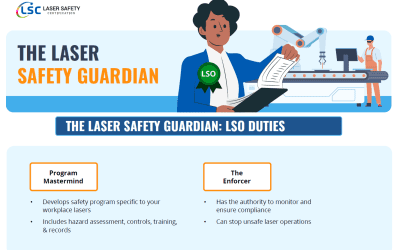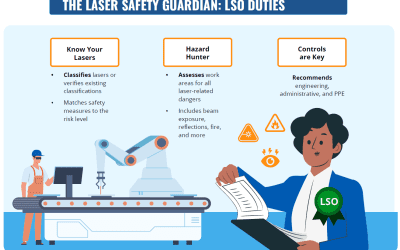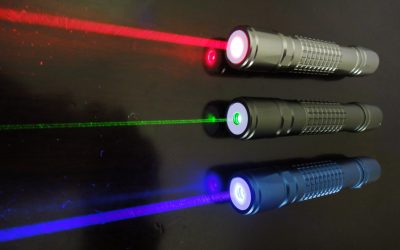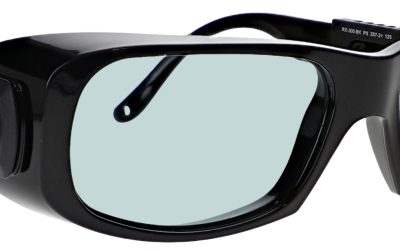We Need a Laser Safety Officer. Now What?
Lasers have found their way into just about every industry, directly or indirectly, in no small part due to the reduced cost of the technology. While many lasers in use are classified as nonhazardous, most organizations need a person in charge of monitoring the impact that lasers have on worker safety.
Lasers and the Laser Safety Officer role
Lasers are classified from Class 1 and 1M lasers, which are considered nonhazardous, to high-powered Class 3B and Class 4 lasers that can cause immediate skin and eye hazards when viewed directly. A properly trained Laser Safety Officer (LSO) knows how to implement control measures to keep workers aware of safety around lasers throughout the workplace.
An LSO is the person selected by his or her employer to be responsible for evaluating and controlling laser hazards. The LSO is also responsible for monitoring and enforcing controls of these hazards.
LSO Responsibilities
Specific responsibilities of an LSO include creating a laser safety program that establishes and maintains policies and procedures that control laser hazards. The LSO will have federal, state and local regulations from which to establish the safety program. The LSO is charged with classifying or verifying the classification of every laser and laser system in the workplace. Furthermore, an LSO might also be in charge of performing hazard evaluations and establishing hazard zones.
Laser Safety Program
No laser safety program is going to be effective, however, unless the LSO can actually assert his or her authority. This means that companies taking the necessary steps to put someone in that position must be willing to grant them the authority the position requires.
LSOs do more than just account for the hazards laser components present to the workforce and visitors. Workplace ergonomics are a pressing challenge for most LSOs today. For example, cramped work environments coupled with bulky machinery require awkward body postures to adjust optics for alignment and optimal laser performance.
Often when workers are under production deadlines they tend to put themselves in awkward postures longer than is recommended. There is a fair chance that many LSOs working in manufacturing see similar ergonomic risks and challenges.
Multiple LSOs?
Obviously, organizations with limited use of lasers might only need a part-time individual to fill the role of LSO. Full-time or part-time, the LSO should be held accountable for approving written operational procedures, alignment procedures and any others that will assure personal safety; and the LSO should audit the equipment to see that it is in proper working order. The job extends to approving signage in areas where lasers are in use and labeling laser equipment. An LSO also ensures that workers are educated properly on laser safety.
PPE & Infrastructure
The largest expenses associated with laser safety are those for safety barriers, like curtains, panels, window protection and door interlocks. It’s important to remember, however, that minor costs like those related to laser safety eyewear, as an example, can be compounded when multiple pairs are required. We can’t stress enough how important it is to be sure all employees are using the proper laser safety glasses.
Finding the person with qualities that make a great LSO might not be the easiest task, but it is definitely a necessary endeavor for many organizations today. When a company decides to designate an LSO and gives that person the proper authority to carry out the job, everyone wins.
How can Laser Safety Certification help?
Get started today by enrolling your company. Select the LSO Certification or Laser Safety Kit Bundle that meets your needs– Industrial, Medical/Healthcare or Cosmetic– to get the laser safety training kit to establish your workplace laser safety program. We are here to answer any questions. Just email us at info@lasersafetycertification.com or check out our FAQ section for answers to common questions.




